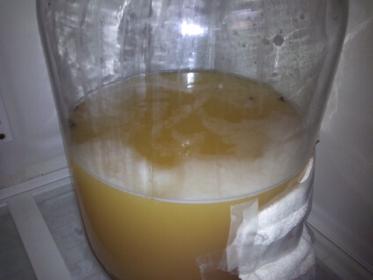Hi everyone. This is my second post here, and it's essentially identical to my first post, which maybe i added to the wrong thread. My apologies if you run into my question in two places.
So what if I rack cider to secondary when it's at 1.015, and there is still a fair amount of airlock activity, but there's also a lot of headspace? Will the heavier CO2 produced by final stages of fermentation displace the oxygen quickly enough? I don't plan on leaving it in secondary for months and months; I just wanted to get it off the big cake of lees that had formed in the primary. I was afraid it would autolyze and give bad flavors.
If I could rely on CO2 filling the headspace in secondary, it sounds less risky and less messy than introducing a bunch of filler (like marbles or mylar balloons I've seen suggested elsewhere) and I currently don't have the option of splitting this batch up to smaller secondary vessels that would eliminate headspace. I also am reluctant to top off with fresh juice because my starting juice was from my own apples, and I want to keep it that way, without introduction of store-bought juice. That's just a point of pride, so i can say: "Yup, it all came from those trees right there."
Thanks a ton. This website is a tremendous resource for my cider craft, and a tremendous drain on my productivity at work.






 ....So im trying to fully understand the cider process.... How do you stop the fermentation so its not too dry? I read somewhere here that racking it to secondary would do that, but it didnt in your case. Why can you top off with cider, but using juice will kick up the fermentation again if both have sugars in them? I thought I had a good enough idea of the process to make a batch but now im second guessing myself after reading this thread.
....So im trying to fully understand the cider process.... How do you stop the fermentation so its not too dry? I read somewhere here that racking it to secondary would do that, but it didnt in your case. Why can you top off with cider, but using juice will kick up the fermentation again if both have sugars in them? I thought I had a good enough idea of the process to make a batch but now im second guessing myself after reading this thread.